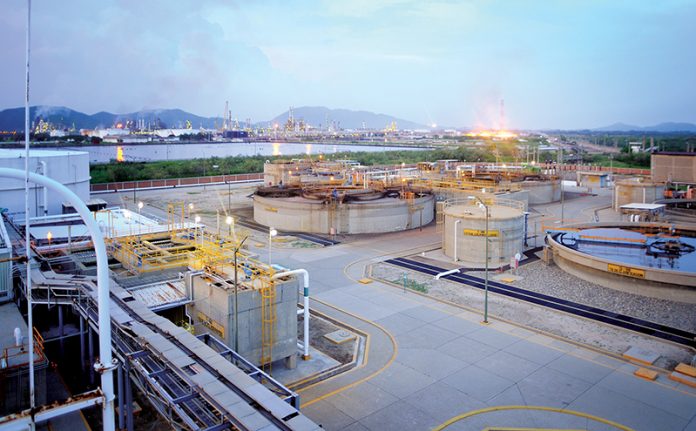By Bill Hinchberger*
Consider the catch-22 for Pacific islanders. They lack sufficient freshwater to meet growing demand. While desalination could boost supply, each plant’s energy-intensive greenhouse gas emissions would help raise sea levels, further threatening the islanders’ existence.
The desalination industry is booming. Investment in new plants topped US$21 billion last year, according to Massachusetts-based BCC Research, and that amount is expected to double by 2020. The world’s 18,000-plus desalination plants are almost all powered by fossil fuels.
But that may be changing. There seems to be a move, especially by newly designed off-grid desalination plants, to reduce carbon footprints through renewables such as solar, wind, wave/tidal and geothermal–sometimes even nuclear.
Interest is strongest “in locations where energy availability is as constrained as is water availability,” according to Steven Schonberger, Practice Manager of the World Bank’s Water Global Practice.
Initiatives can be found in outlying regions, rural areas, islands, businesses, resorts, and other remote locations. The Middle East North Africa (MENA) region leads the way, but people are busy working on alternatives around the globe–from Hawaii to Egypt’s Red Sea resorts.

“At a recent conference in Trinidad and Tobago, 60-70 percent of the papers were about renewable energy for desalination,” recalls Gilad Cohen, VP of sales and marketing, North and Latin America at IDE Technologies, a subsidiary of the Israeli desalination firm. “There is a growing trend.”
The efforts are part of a new equation that may have broader implications. The Global Clean Water Desalination Alliance (GCWDA) calls it “H2O minus CO2”.
GCWDA was founded during the COP21 climate change summit in Paris. The multi-stakeholder group of 80 original signatories included public, private and civil society representatives. Their mission: guarantee that 80 percent of new desalination plants and at least 10 percent of the total run on renewable energy by 2035.
“I believe that we are approaching a revolution in renewables,” says Leon Awerbuch, Director and Dean of the Academy at the International Desalination Association (IDA), a trade group and founding member of the GCWDA. “With that there will be enormous potential [for renewable energy in desalination].”
There’s more than climate correctness alone driving this phenomenon. The cost of solar and wind power are starting to compete head-to-head with fossil fuel.
Industry insiders point to the Dubai Electricity and Water Authority (DEWA) for its projected 800 MW Sheikh Maktoum Solar Park Phase III plant. A bid in May rang in at US$2.99 per kilowatt-hour (kWh), breaking the three-dollar barrier for the first time for solar, trouncing fossil fuel’s hypothetical best price.
“Renewables can now compete with fossil fuel on an economic basis,” says Awerbuch. “This is not just about being green or climate change. It is economically driven.”
In isolated areas, the economics behind alternative energy are even more favourable. “There is the issue of transporting the oil and generating the needed electricity, which is beyond the capabilities of many parts of the world,” says Philip Moravcik, a technology transfer specialist at the University of Hawaii at Manoa’s Water Resources Research Centre. “If you can generate energy with minimal external inputs, that is attractive.”
Truly far-flung islands face looming operations and maintenance challenges. Normally plant managers would have to train or recruit skilled people to work full-time on site.
But advances in information and communications technology are offering a novel solution. “The next phase is to make remote operations feasible,” says Clark C.K. Liu, Professor Emeritus and Researcher in the Department of Civil and Environmental Engineering at the University of Hawaii at Manoa. “We could then operate the facilities in Hawaii, several thousands of miles away, using satellite communication.”
Advances in desalination technologies help decision-makers rethink their energy options. If less energy is needed, clean options might be considered for their environmental benefits even where they remain more expensive. “We try to improve the carbon footprint and reliability,” notes Schonberger. “We start with efficiency and then add incremental energy sources. We try to get the water- energy efficiency moving in the right direction with the right technologies.”

Many places boast just as much sun and wind as countries of the MENA region. What sets places like Dubai, Abu Dhabi and Saudi Arabia apart are their public policies, says Awerbuch, stressing that the right regulatory environment is essential.
“They are all pushing hard for renewable energy,” he says. “It starts with public policy. We need governments and utility companies to understand the benefits and recognise that this is not just a fashionable trend.”
Reliability remains the main drawback for the two leading renewable sources. No sun, no wind: no power. “Storage options are improving but there are limitations,” says Schonberger. To solve the intermittence problem, he added, project designers consider “a combination of renewables and conventional energy if they need a constant flow.”
Land use also complicates options. Solar and wind “are land-intensive,” observes Schonberger. The Palestinian Authority ran into that wall when it considered building a desalination plant in Gaza. There’s plenty of sunlight but not enough open space in the densely-populated area, said the World Bank official.
While hardly an environmental darling, nuclear energy can provide a constant current and doesn’t need quite so much land. “The feasibility of integrated nuclear desalination plants has been proven with over 150 reactor-years of experience, chiefly in Kazakhstan, India and Japan,” relates the website of the World Nuclear Association, an industry group.
Not everyone is convinced. “It is unlikely just to power a [desalination] plant,” argues Schonberger, adding that nuclear reactors could be built in parallel with desalination plants if connected to the grid. “We are debating nuclear. There is some disagreement,” says Awerbuch.
For a thirsty world facing a changing climate, desalination and affordable no-carbon energy might seem like the proverbial match made in heaven.
But Schonberger offers a final word of caution. “We have to be careful that having a readily available energy source doesn’t lead to over-exploitation.”








